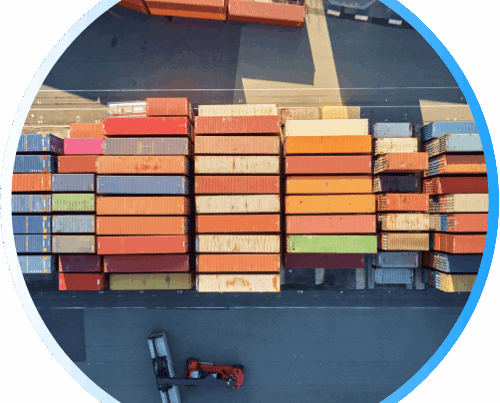Rate Related Update and Market Conditions
📌 Current U.S. Tariff Status (as of October 10, 2025)
-
CBP Operations During Government Shutdown: The ongoing federal shutdown is beginning to affect customs and trade operations. While CBP remains fully active as an essential service, partner agencies such as FDA, EPA, and USDA are operating with reduced staffing, resulting in processing delays for regulated goods. Air traffic control shortages are also causing intermittent air cargo disruptions at major U.S. gateways.
-
25% Truck Tariff Announced for November 1:
President Trump confirmed plans for a 25% tariff on medium- and heavy-duty trucks, pending formal notice. Under USMCA rules, vehicles meeting North American content thresholds may still qualify for partial duty relief. Mexico and Canada, together supplying over 90% of U.S. truck imports, would be most affected.
-
Chinese Vessel Fees Effective October 14:
Beginning next week, Chinese-built and Chinese-operated ships calling at U.S. ports will face new port fees: $50 per net ton for operated vessels and $18 per net ton or $120 per container for Chinese-built tonnage. Fees must be paid to the Treasury before arrival to ensure discharge clearance.
-
Upcoming Tariff Adjustments and China Deadline:
Tariffs on lumber, furniture, and cabinetry remain set for October 14, with higher rates for non-trade-agreement partners from January 1, 2026. If no new U.S.–China deal is reached by November 10, tariffs on Chinese imports could rise to 54%, though high-level meetings are expected later this month to avoid escalation.
Source: whitehouse.gov, politico.com, whitehouse.gov
Rate Related Update and Market Conditions
Ocean Trade Lane Snapshot
Trans-Pacific Eastbound (TPEB)
Golden Week blank sailings are reducing capacity to 62–69% through Weeks 41–42, with a rebound to 83% expected in Week 43. Demand remains subdued, and carriers are postponing PSS to November 1 while preparing an October 15 GRI to offset sliding rates.
Far East Westbound (FEWB)
The post-holiday market remains weak. Carriers have overbooked to protect utilization and will maintain 10–20% capacity cuts through October and early November. With demand flat, GRIs set for late October may struggle to take effect; the next SCFI update on October 10 will signal rate direction.
Trans-Atlantic Westbound (TAWB)
Congestion persists across European ports—Antwerp (90% yard use), Rotterdam (70–83%), Hamburg (75%)—with delays of two to seven days. Equipment shortages continue across Austria, Hungary, and Southern Europe. Spot rates remain stable at $1,800–1,900 / FEU.
Air Freight Market Update
Across Asia, tight capacity and high rates continue following Golden Week disruptions. Flight cancellations in China and strong electronics exports are keeping space constrained on Trans-Pacific lanes, while Vietnam and Cambodia face ongoing backlogs. South Korea and Malaysia report steady conditions, and capacity recovery is expected to accelerate after mid-October as flight schedules normalize.
Sources: xeneta.com, maersk.com, yangming.com, evergreen-line.com, supplychaindive.com
Asia–Latin America Freight & Port Update
1) Freight Rate & Capacity Snapshot
Spot rates continued their slide: Drewry’s WCI fell ~1 % WoW to $1,651/FEU, evidencing ongoing pressure on offshore trades. Carriers remain trimming capacity via blank sailings (≈ 6 % of E-W sailings) to sustain utilization levels in the high-80s/low-90s.
Sources: drewry.co.uk ; theloadstar.com
2) Port Operations & Infrastructure
At the Panama Canal, FY2025 transits rose ~19.3 % YoY as water levels improved, easing bottlenecks. In Brazil, Santos and Itapoá face tight yard utilization and 4–6 days waiting for off-window vessels, while Paranaguá shows recovery with ~12–24 h wait times for on-schedule calls.
Sources: seatrade-maritime.com ; hapag-lloyd.com
3) Transshipment & Compliance Updates
Mexico has deferred approval of proposed tariff increases on ~1,500 Asia-origin lines, keeping near-term import policy volatile but not immediately stricter. At Panama and Caribbean hubs, carriers report only 1–2 days of delay for off-window vessels, though blanking risk suggests adding schedule buffers of 1–3 days.
Sources: reuters.com ; maersk.com

Strikes at Rotterdam and Other European Ports Cause Severe Delays
Port operations across parts of Europe are facing significant disruptions as dockworker strikes extend into their second day at the Port of Rotterdam and spread to other major terminals. In Rotterdam, lashers halted seaside cargo handling, delaying 13 incoming vessels and creating congestion worsened by recent storms. Similar industrial actions in neighboring ports have limited vessel diversion options. Authorities report that landside activity continues, but delays to vessel schedules and inland transport are expected to persist through the week.
Carriers Mitigate Impact of Upcoming U.S. Port Fees on Chinese Vessels
With new U.S. port fees on Chinese-built or Chinese-operated vessels taking effect October 14, shipping lines are reorganizing fleets and lease agreements to minimize exposure. Analysts say many carriers are reallocating tonnage and clarifying payment responsibilities in contracts, reducing the likelihood of major rate increases. The new fees are part of U.S. efforts to balance trade with China but are expected to have limited near-term impact on global freight costs.


